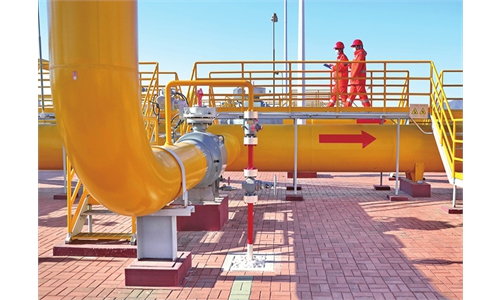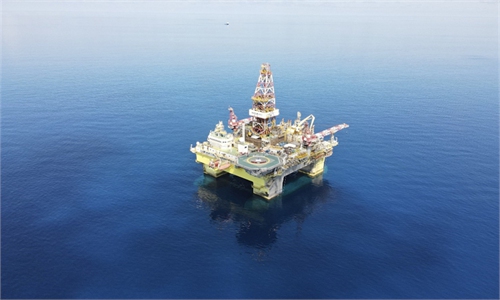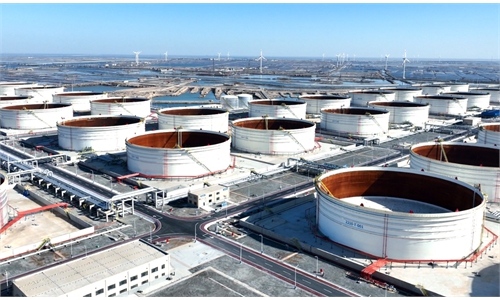CNOOC discovers another oilfield with reserves of over 100 million tons in Bohai Sea
Two CNOOC workers operate a drilling equipment on an offshore platform. File photo: Courtesy of CNOOC
Chinese state-owned oil major CNOOC announced on Wednesday that it has discovered a new oilfield in the Bohai Sea, with reserves of 100 million tons.
The discovery at exploration block Bozhong 26-6, 170 kilometers off Tianjin Municipality at an average depth of 22.1 meters, was the third discovery of an oilfield with over 100 million tons made by the company in the past three years, it said in a statement sent to the Global Times.
CNOOC said the find further enhanced China's offshore oil & gas reserve base and is of great importance for safeguarding China's energy security.
Test drilling could produce 270 tons of crude and 0.32 million cubic meters of gas per day, demonstrating the oilfield's potential, the company said in a statement.
Bozhong 26-6's proven geographical reserves are estimated at 130 million tons of oil equivalent. The oilfield could produce 20 million tons of crude, enough to power 10,000 cars to run for 30 years, according to CNOOC. A total of 9 billion cubic meters of natural gas will be extracted during the process, enough to power up Tianjin, with its permanent population of nearly 14 million, for 15 years.
With its seven-year-plan to ramp up domestic production, CNOOC said it has added oil and gas proven reserves totaling 1 billion tons in the last five years, providing a solid material guarantee for its Bohai Oilfield to churn out 40 million tons of crude per year. Bohai Oilfield is China's largest oil producing base.
Experts said offshore oil has increasingly become a source of growth in China's energy reserves.
In January, the company said it aims to produce 6.5 to 6.6 million barrels of oil equivalent for 2023.
Bozhong 26-6 is the third oilfield discovery with 100 million tons of reserves in the Bohai Sea after Kenli 6-1 and Kenli 10-2.
CNOOC's discovery came at a time when the International Energy Agency (IEA) is predicting an increase in gas demand from China.
According to Tuesday's IEA Gas Market Report for the first quarter of 2023, China's gas consumption is projected to see a rebound of nearly 7 percent in 2023, following China's optimization of epidemic control measures.
The report further noted that the uncertainty range for China's liquefied natural gas (LNG) demand is 40 billion cubic meters, greater than the uncertainty associated with the potential loss of all remaining pipeline gas flows into Europe from Russia, the IEA said.
Bloomberg reported the prediction, saying that China's gas demand is "a bigger worry for Europe than the Russia cutoff."
Commenting on the issue, Jin Lei, a professor with the China University of Petroleum, told the Global Times on Wednesday that China's procurement will have an impact on gas prices but the impact will never be bigger than the Russia cutoff.
Jin noted that China has beefed up domestic production in recent years and reliance on imports may decline.
Lin Boqiang, director of the China Center for Energy Economics Research at Xiamen University, told the Global Times on Wednesday that a 7 percent increase can only be described as "normal" for China and LNG purchases require receiving facilities, which will take time to build.




